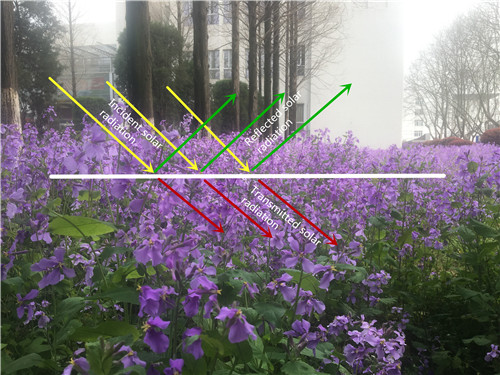Scientsits Propose a New Parameterization of Canopy Radiative Transfer for Land Surface Radiation Models
Date:2017-04-10
Among the physical processes of land surfaces, canopy radiative transfer is especially important. It plays a key role in controlling land–atmosphere flux exchanges by determining surface albedo and

Illustration of canopy radiative transfer (image by ZHANG Feng)
Dr. ZHANG Feng from Nanjing University of Information, Science and Technology and his collaborators from Institute of Atmospheric Physics, Chinese Academy of Sciences propose a new parameterization for the canopy phase function, which is based on the leaf normal distribution and leaf reflection/transmission, and examine the accuracy in reflection and transmission of the canopy through comparison with the benchmark result of SOSA. The findings are published in
"The new method,” says Dr. ZHANG, “when based on Eddington approximation, can substantially improve the accuracy compared to the previously preferred hemispheric constant method, under both isotropic and anisotropic conditions. Therefore, the canopy albedo can be evaluated more accurately by the analytical solution of non-zero soil background reflection.”
Moreover, their investigation also reveals that there is a relationship between the direct radiation and the diffuse radiation of the canopy, which have been treated separately in previous studies. It is concluded that the new parameterization is well suited for applications of land surface radiation modeling.
Reference:
Zhang, F., Y. D. Lei, J.-R. Yan, J.-Q. Zhao, J. N. Li, and Q. D. Dai, 2017:
